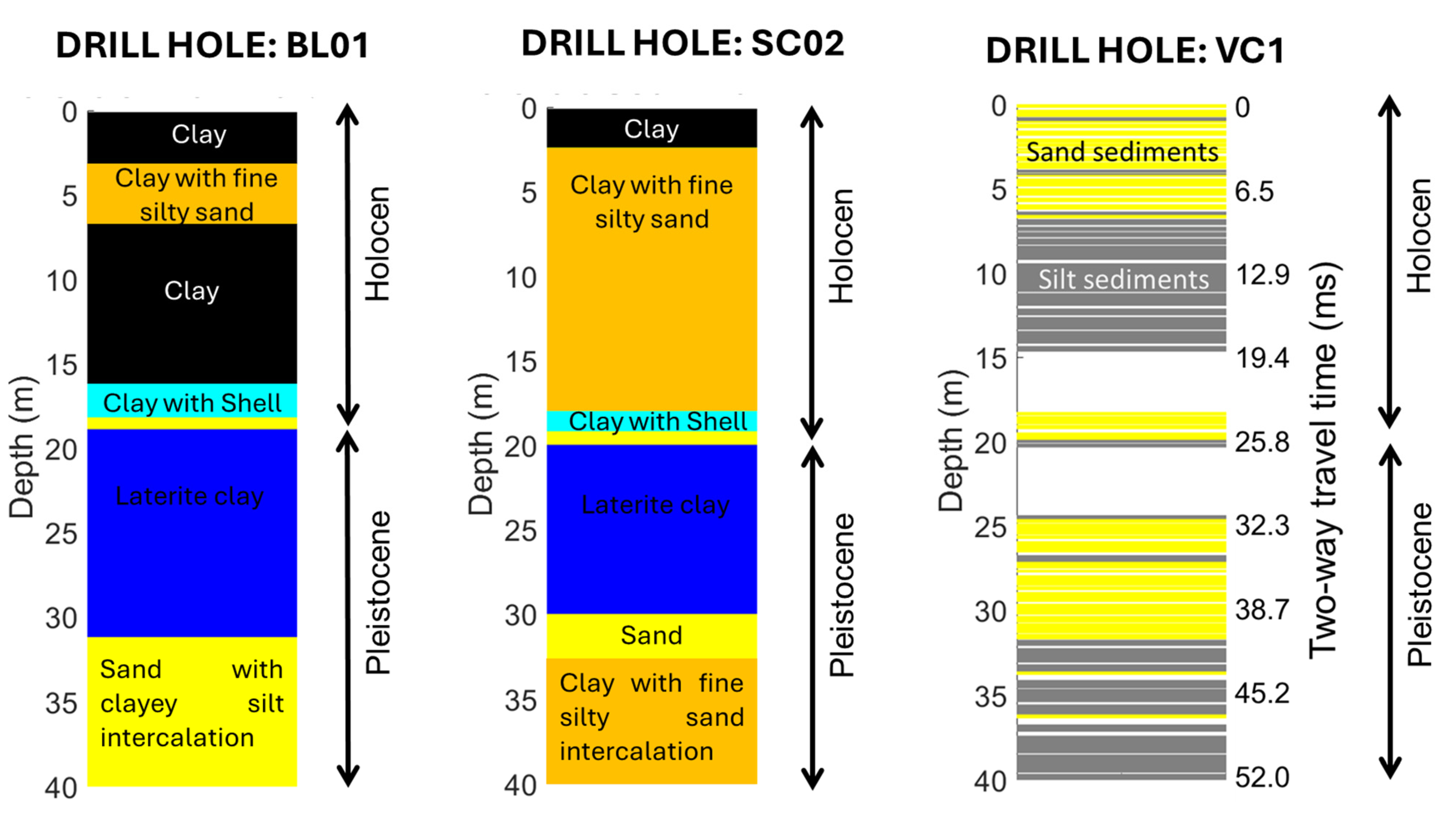Researching Holocene Sediments at Bac Lieu Offshore, Vietnam with Insights from Near-Surface 2D Reflection Seismic Data
Abstract
1. Introduction
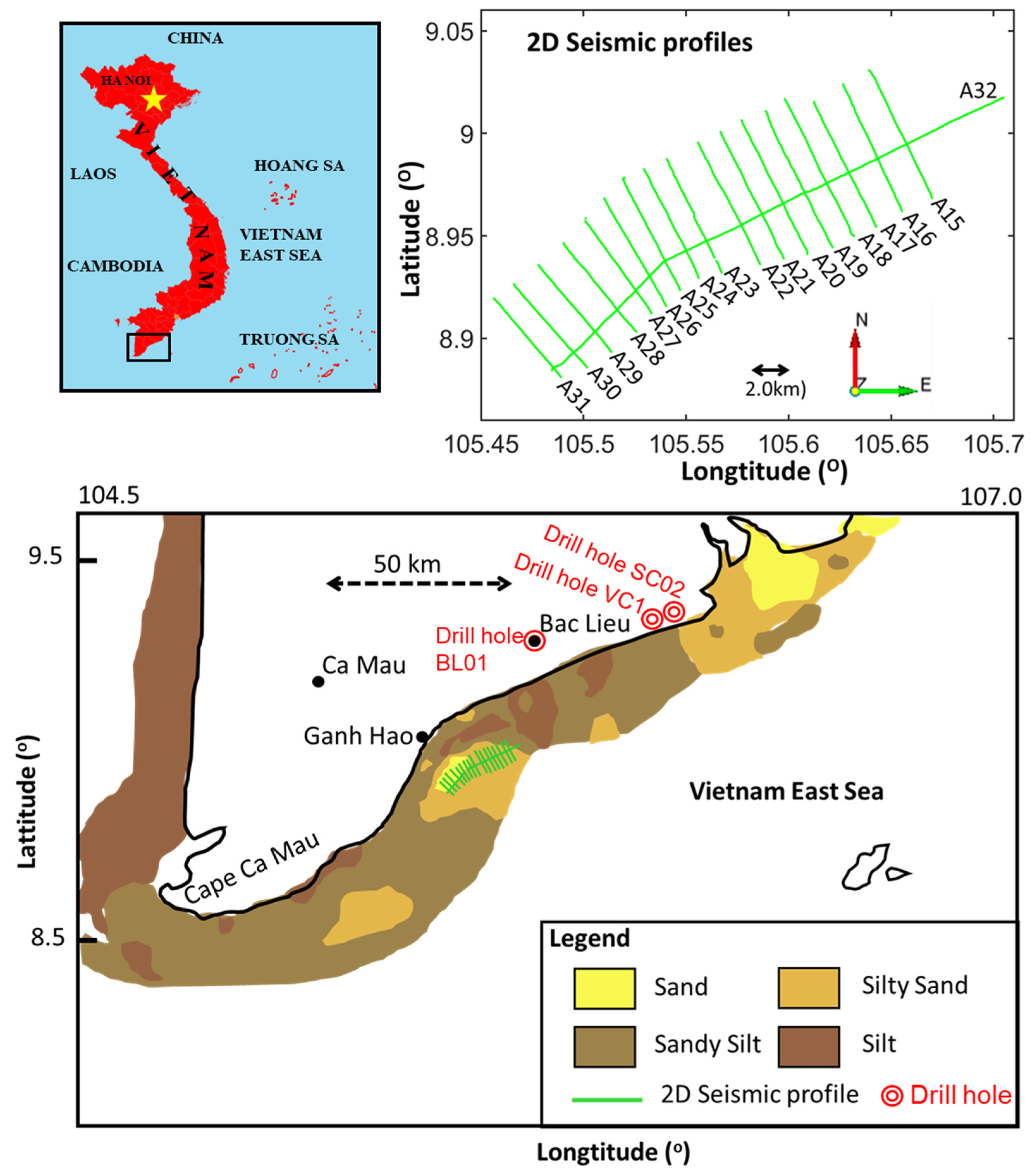
2. Materials and Methods
2.1. Processing Data
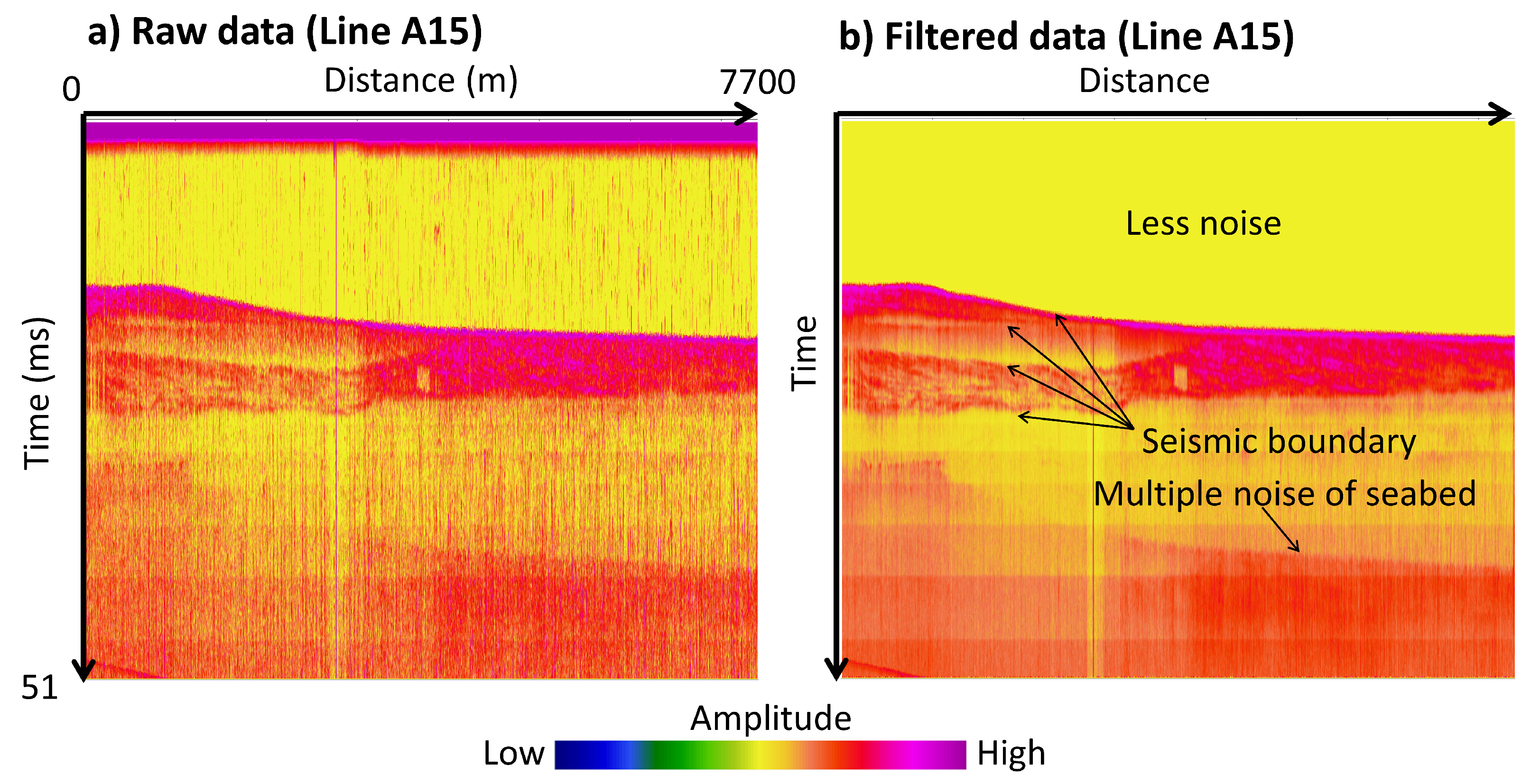
2.2. Calculating Seismic Attributes
- (i).
- Firstly, the high-resolution seismic dataset experiences important preprocessing steps. The amplitude values within the dataset, initially defined by a limited range, are rescaled to a new range spanning from 0 to (232 − 1). This rescaling leads to a new 32-bit integer output, supporting its dynamic range for the following analysis [7,28,29,30,31].
- (ii).
- Secondly, an important parameter in calculating the textural seismic attributes is the user-specified sliding window. The rectangular window, which isolates a specific region of interest, can be freely positioned within the seismic data space. Its sizes are defined by the numbers of seismic traces and time samples (see Figure 6) [7,29].
3. Results and Discussions
3.1. Seismic Analysis
3.2. Interpretation
4. Conclusions
Author Contributions
Funding
Data Availability Statement
Acknowledgments
Conflicts of Interest
References
- Ianniruberto, M.; Campos, J.E.; Araújo, V. Application of shallow seismic profiling to study riverbed architectural facies: A case study of the Tocantins river (Pará-Brazil). An. Acad. Bras. Ciências 2012, 84, 645–654. [Google Scholar] [CrossRef]
- Bui Viet, D.; Stattegger, K.; Unverricht, D.; Phung Van, P.; Nguyen Trung, T. Late Pleistocene–Holocene seismic stratigraphy of the Southeast Vietnam Shelf. Glob. Planet. Change 2013, 110, 156–169. [Google Scholar]
- Novak, B.; Björck, S. Late Pleistocene–early Holocene fluvial facies and depositional processes in the Fehmarn Belt, between Germany and Denmark, revealed by high-resolution seismic and lithofacies analysis. Sedimentology 2002, 49, 451–465. [Google Scholar] [CrossRef]
- Le, C.V.A.; Duong, M.B.; Kieu, T.D. High–Resolution Seismic Reflection Survey of Holocene Sediment Distribution at Thi Vai River, Ho Chi Minh City, Vietnam. In Lecture Notes in Civil Engineering, Proceedings of the International Conference on Innovations for Sustainable and Responsible Mining; Springer: Berlin/Heidelberg, Germany, 2020; Volume 2, pp. 290–304. [Google Scholar]
- Laws, A.W.; Maloney, J.M.; Klotsko, S.; Gusick, A.E.; Braje, T.J.; Ball, D. Submerged paleoshoreline mapping using high-resolution Chirp sub-bottom data, Northern Channel Islands platform, California, USA. Quat. Res. 2019, 93, 1–22. [Google Scholar] [CrossRef]
- Monnier, B.; Pergent, G.; Mateo, M.Á.; Carbonell, R.; Clabaut, P.; Pergent-Martini, C. Sizing the carbon sink associated with Posidonia oceanica seagrass meadows using very high-resolution seismic reflection imaging. Mar. Environ. Res. 2021, 170, 105415. [Google Scholar] [CrossRef] [PubMed]
- Le, C.V.A.; Duong, M.; Nguyen, T.; Nguyen, T. Application of High–resolution Reflection Seismic Attributes for Researching 3D Shallow Marine Geology Structures. Inżynieria Miner. J. Pol. Miner. Eng. Soc. 2023, 1, 175–184. [Google Scholar] [CrossRef]
- EdgeTech. Edgetect Introduces New Portable Sub-Bottom Profiling System. Available online: https://www.edgetech.com/edgetech-introduces-new-portable-sub-bottom-profiling-system/ (accessed on 15 April 2020).
- SyQwest Inc. The StrataBox HD TM, a Portable High-Resolution Marine Sediment Imaging Instrument. Available online: https://geo-matching.com/products/stratabox (accessed on 15 July 2024).
- Bao, K. To Build a Highway, the Deputy Prime Minister said “Lack of River Sand to Use Sea Sand Instead”. Available online: https://dantri.com.vn/xa-hoi/lam-cao-toc-pho-thu-tuong-chi-dao-thieu-cat-song-dung-cat-bien-thay-the-20240511183852798.htm (accessed on 15 July 2024).
- Kitazawa, T.; Nakagawa, T.; Hashimoto, T.; Tateishi, M. Stratigraphy and optically stimulated luminescence (OSL) dating of a Quaternary sequence along the Dong Nai River, southern Vietnam. J. Asian Earth Sci. 2006, 27, 788–804. [Google Scholar] [CrossRef]
- Nguyễn, T.H.T.; Trần, N.; Đinh, X.T.; Nguyễn, Đ.T.; Trần, T.T.N. Tiến hóa trầm tích Pleistocen muộn-Holocen đới bờ đồng bằng Nam Bộ và sự ghép nối đồng bằng triều bán đảo Cà Mau với đồng bằng châu thổ sông Mê Kông trong Holocen giữa-muộn. Tạp Chí Khoa Học Đhqghn: Các Khoa Học Trái Đất Và Môi Trường 2019, 35, 97–120. [Google Scholar]
- Tamura, T.; Nguyen, V.L.; Ta, T.K.O.; Bateman, M.D.; Gugliotta, M.; Anthony, E.J.; Nakashima, R.; Saito, Y. Long-term sediment decline causes ongoing shrinkage of the Mekong megadelta, Vietnam. Sci. Rep. 2020, 10, 8085. [Google Scholar] [CrossRef] [PubMed]
- Le, N.T.; Nguyen, S.N.; Nguyen, T.A.M.; Nguyen, Q.D.; Duong, B.M.; Vo, T.H.Q. Research and Assessment of the Potential Natural Resources at Can Gio Offshore, Ho Chi Minh City and Proposed Solutions for Suitable Protection; Ho Chi Minh City Institute of Resources Geography, VAST: Ho Chi Minh City, Vietnam, 2018.
- Xue, Z.; He, R.; Liu, J.P.; Warner, J.C. Modeling transport and deposition of the Mekong River sediment. Cont. Shelf Res. 2012, 37, 66–78. [Google Scholar] [CrossRef]
- Unverricht, D.; Szczuciński, W.; Stattegger, K.; Jagodziński, R.; Le, X.T.; Kwong, L.L.W. Modern sedimentation and morphology of the subaqueous Mekong Delta, Southern Vietnam. Glob. Planet. Chang. 2013, 110, 223–235. [Google Scholar] [CrossRef]
- Ta, T.K.O.; Nguyen, V.L.; Tateishi, M.; Kobayashi, I.; Saito, Y. Holocene delta evolution and depositional models of the Mekong River Delta, southern Vietnam. In River Deltas–Concepts, Models, and Examples; SEPM (Society for Sedimentary Geology): Claremore, OK, USA, 2005. [Google Scholar]
- Ta, T.K.O.; Nguyen, V.L.; Tateishi, M.; Kobayashi, I.; Tanabe, S.; Saito, Y. Holocene delta evolution and sediment discharge of the Mekong River, southern Vietnam. Quat. Sci. Rev. 2002, 21, 1807–1819. [Google Scholar] [CrossRef]
- Nguyen, T.T.; Do, H.C.; Stattegger, K.; Bui, V.D.; Yang, S.; Ngo, T.K.C.; Nguyen, X.T.; Nguyen, V.T.; Ngo, T.N. Depositional sequences of the Mekong river delta and adjacent shelf over the past 140 kyr, southern Vietnam. J. Asian Earth Sci. 2021, 206, 104634. [Google Scholar] [CrossRef]
- Vietnam Department of Survey—Mapping and Geographic Information. Administrative Map of Socialist Republic of Vietnam. Available online: https://www.bandovn.vn/vi/page/mau-ban-do-hanh-chinh-nuoc-cong-hoa-xa-hoi-chu-nghia-viet-nam-181 (accessed on 11 August 2020).
- Sandmeier, K.-J. Reflexw—GPR and Seismic Processing Software. Available online: https://www.sandmeier-geo.de/reflexw.html (accessed on 7 July 2020).
- Institute of Coastal and Offshore Engineering Ho Chi Minh City Vietnam. Tide Level in May 2024 for Ganh Hao Station, Bac Lieu Province, Vietnam. Available online: http://www.icoe.org.vn/?mod=list&action=view&gid=1002&id=1013 (accessed on 20 July 2024).
- Brouwer, F.; Huck, A. An Integrated Workflow to Optimize Discontinuity Attributes for the Imaging of Faults. In Attributes: New Views on Seismic Imaging—Their Use in Exploration and Production; Marfurt, K.J., Gao, D., Barnes, A., Chopra, S., Corrao, A., Hart, B., James, H., Pacht, J., Rosen, N.C., Eds.; SEPM Gulf Coast Section Publications: Tulsa, OK, USA, 2011; pp. 496–533. [Google Scholar]
- Chopra, S.; Marfurt, K.J. Seismic Attributes for Prospect Identification and Reservoir Characteriztion; Society of Exploration Geophysicists: Tulsa, OK, USA, 2007. [Google Scholar]
- Yilmaz, O. Seismic Data Analysis: Processing, Inversion, and Interpretation of Seismic Data; Society of Exploration Geophysicists: Tulsa, OK, USA, 2001. [Google Scholar]
- Le, C.V.A.; Harris, B.D.; Pethick, A.M. New perspectives on Solid Earth Geology from Seismic Texture to Cooperative Inversion. Sci. Rep. 2019, 9, 14737. [Google Scholar] [CrossRef] [PubMed]
- Le, C.V.A.; Harris, B.D.; Pethick, A.M.; Takam Takougang, E.M.; Howe, B. Semiautomatic and Automatic Cooperative Inversion of Seismic and Magnetotelluric Data. Surv. Geophys. 2016, 37, 845–896. [Google Scholar] [CrossRef]
- Haralick, R.M.; Shanmugam, K.; Dinstein, I. Textural features for image classification. IEEE Trans. Syst. Man Cybern. 1973, 3, 610–621. [Google Scholar] [CrossRef]
- dGB Earth Sciences. OpendTect dGB Plugins User Documentation; Version 4.6; dGB Earth Sciences: Sugar Land, TX, USA, 2015. [Google Scholar]
- Hall-Beyer, M. GLCM Texture Tutorial. Available online: http://www.fp.ucalgary.ca/mhallbey/tutorial.htm (accessed on 3 May 2016).
- Wang, Z. Computational Seismic Interpretation Using Geometric Representation and Tensor-Based Texture Analysis; Georgia Institute of Technology: Atlanta, GA, USA, 2018. [Google Scholar]
- Nguyen, Q.D.; Nguyen, V.G.; Le, N.T. Investigation of Marine Sediments with a Subbottom Profilers System in West Coast of Camau, Vietnam. Inżynieria Miner. 2023, 2, 215–223. [Google Scholar]
- MathWorks. Interpolate 2-D or 3-D scattered Data. Available online: https://www.mathworks.com/help/matlab/ref/scatteredinterpolant.html (accessed on 7 July 2020).
- Orton, G.; Reading, H. Variability of deltaic processes in terms of sediment supply, with particular emphasis on grain size. Sedimentology 1993, 40, 475–512. [Google Scholar] [CrossRef]

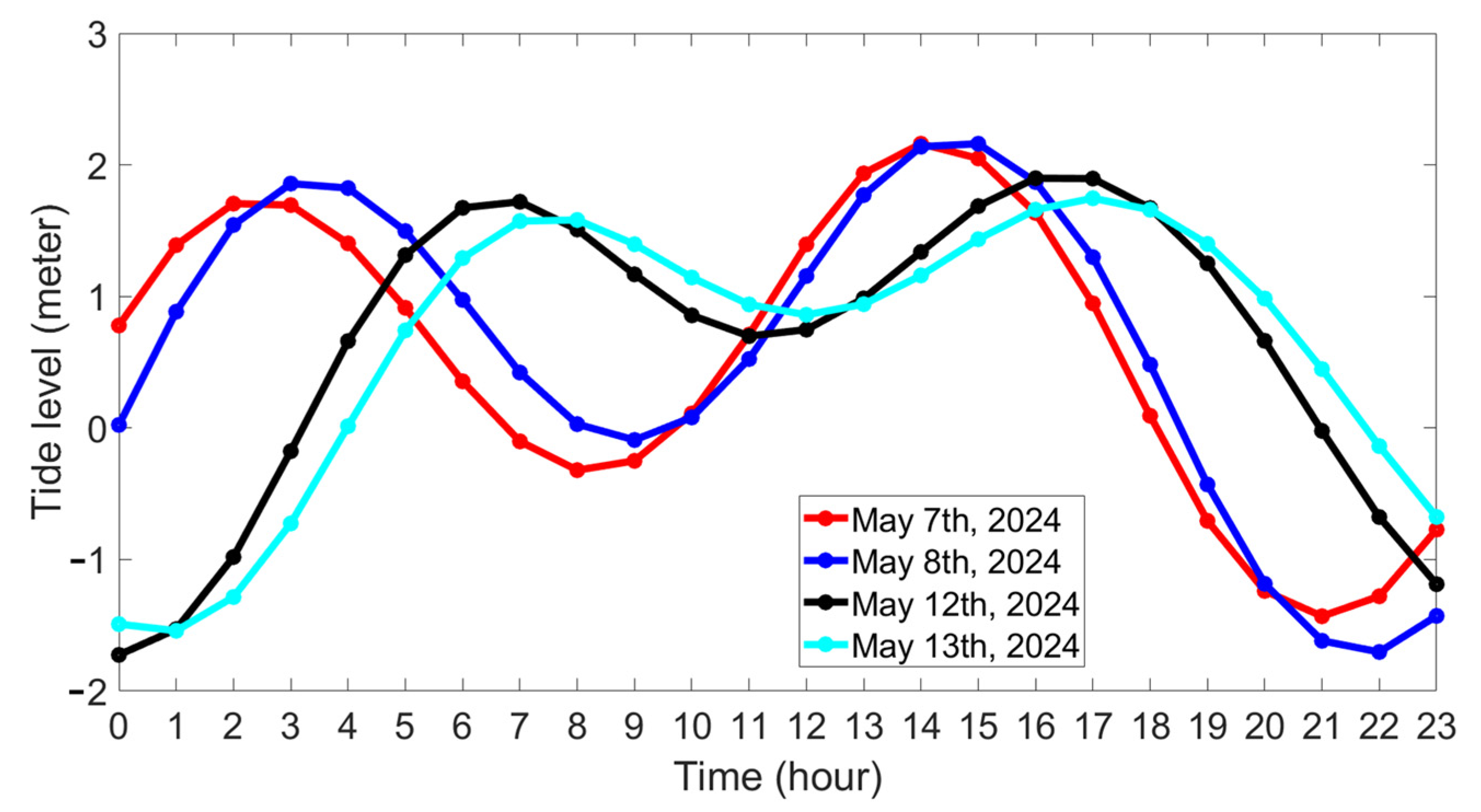
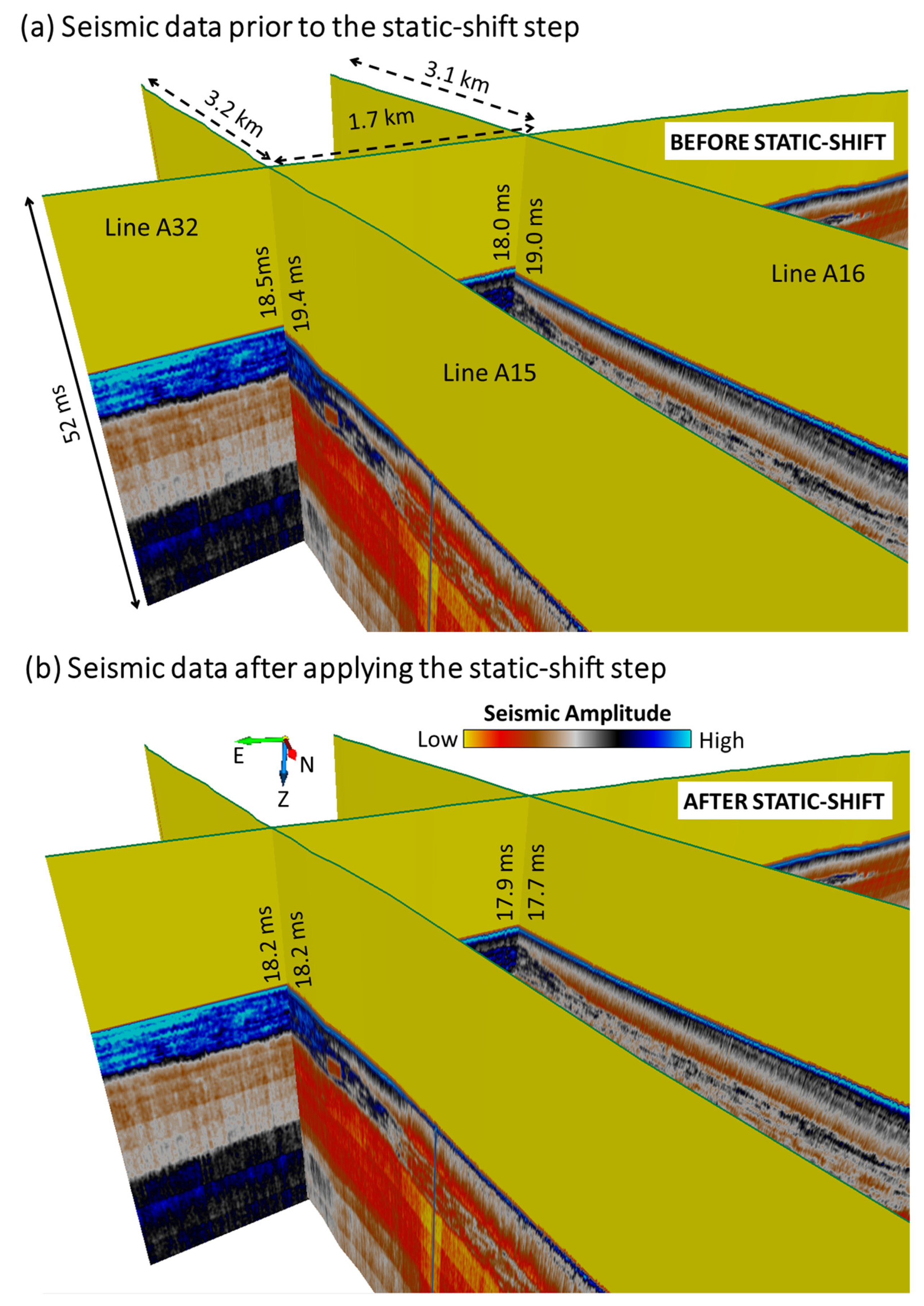
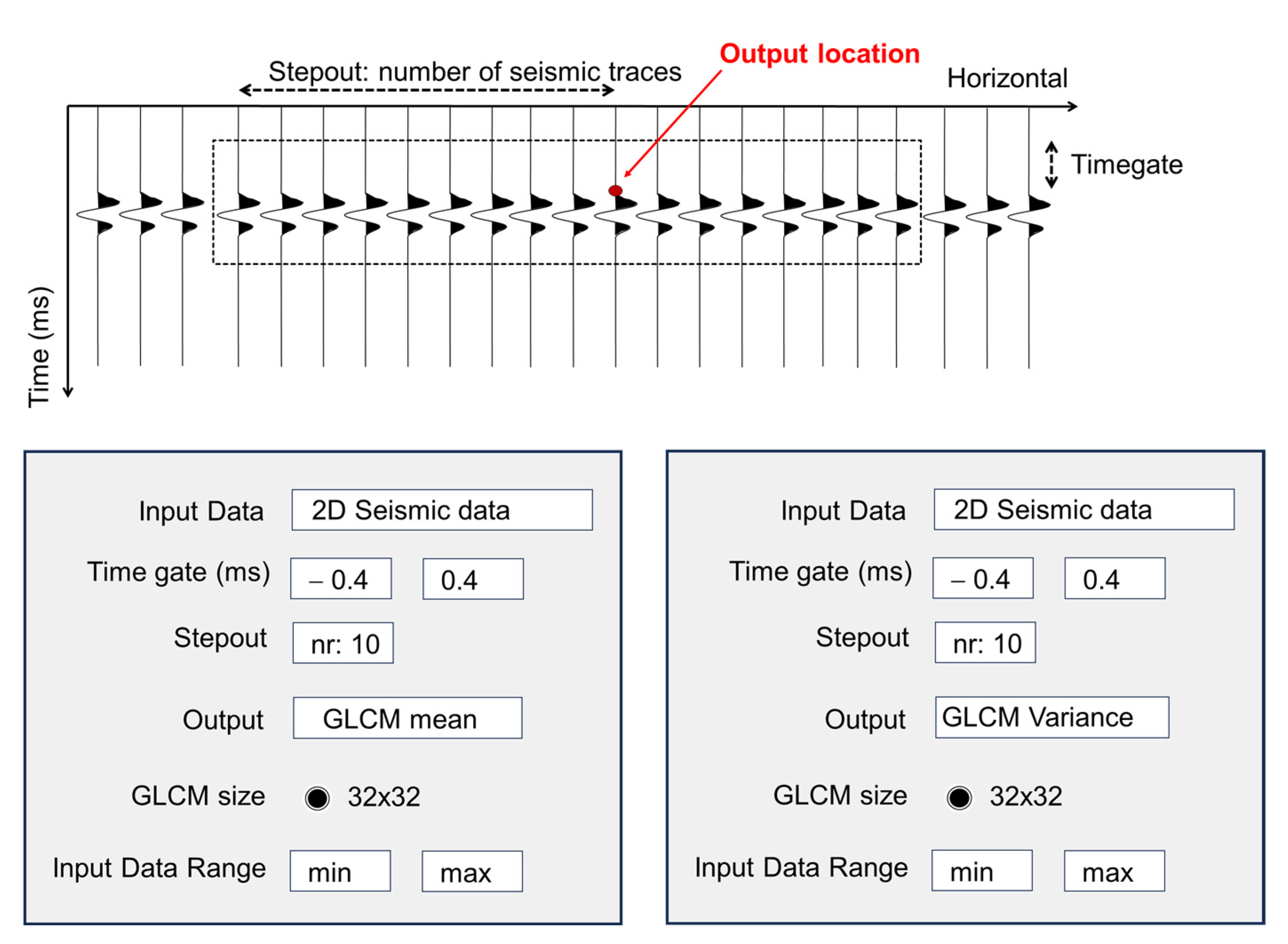
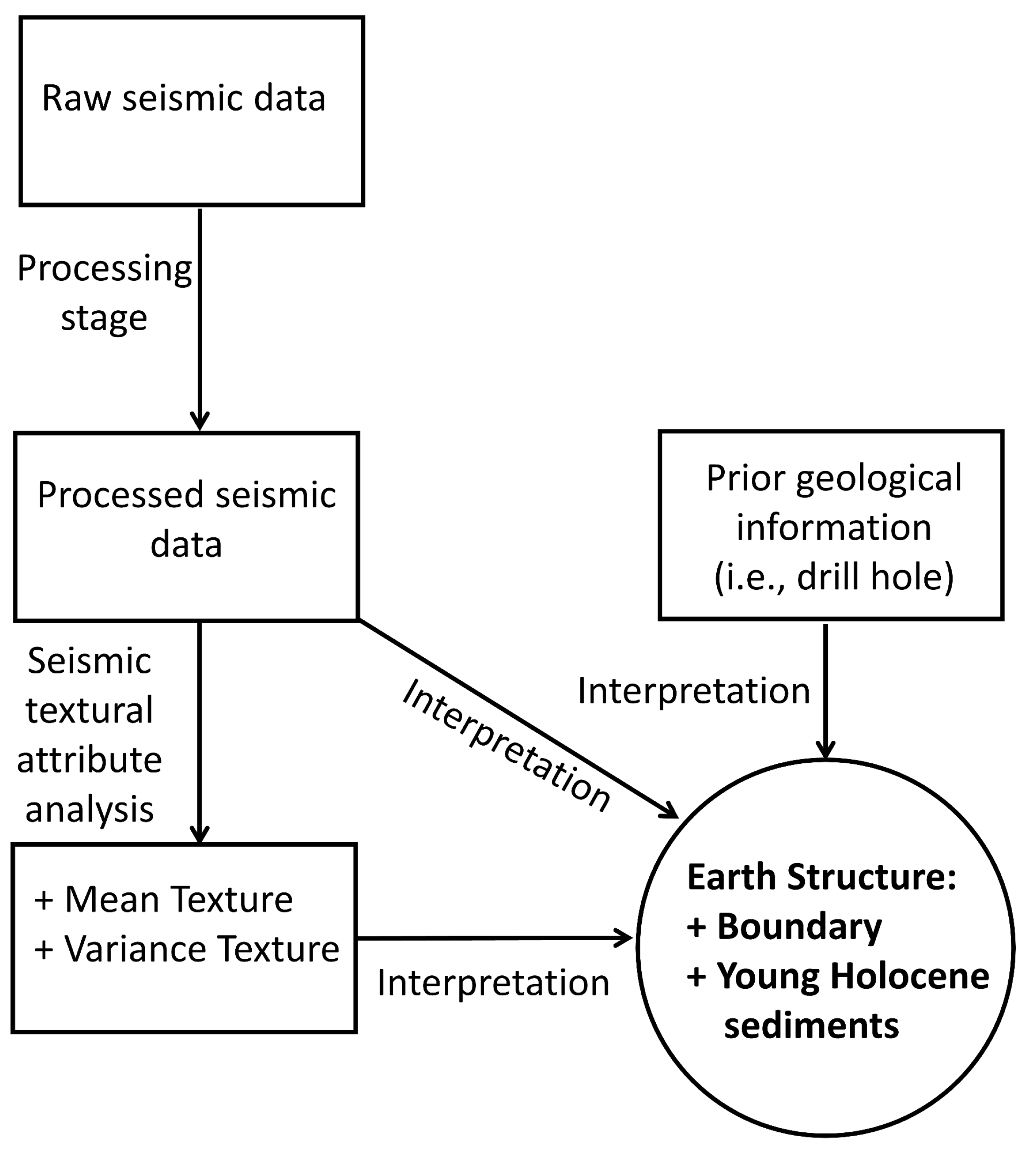
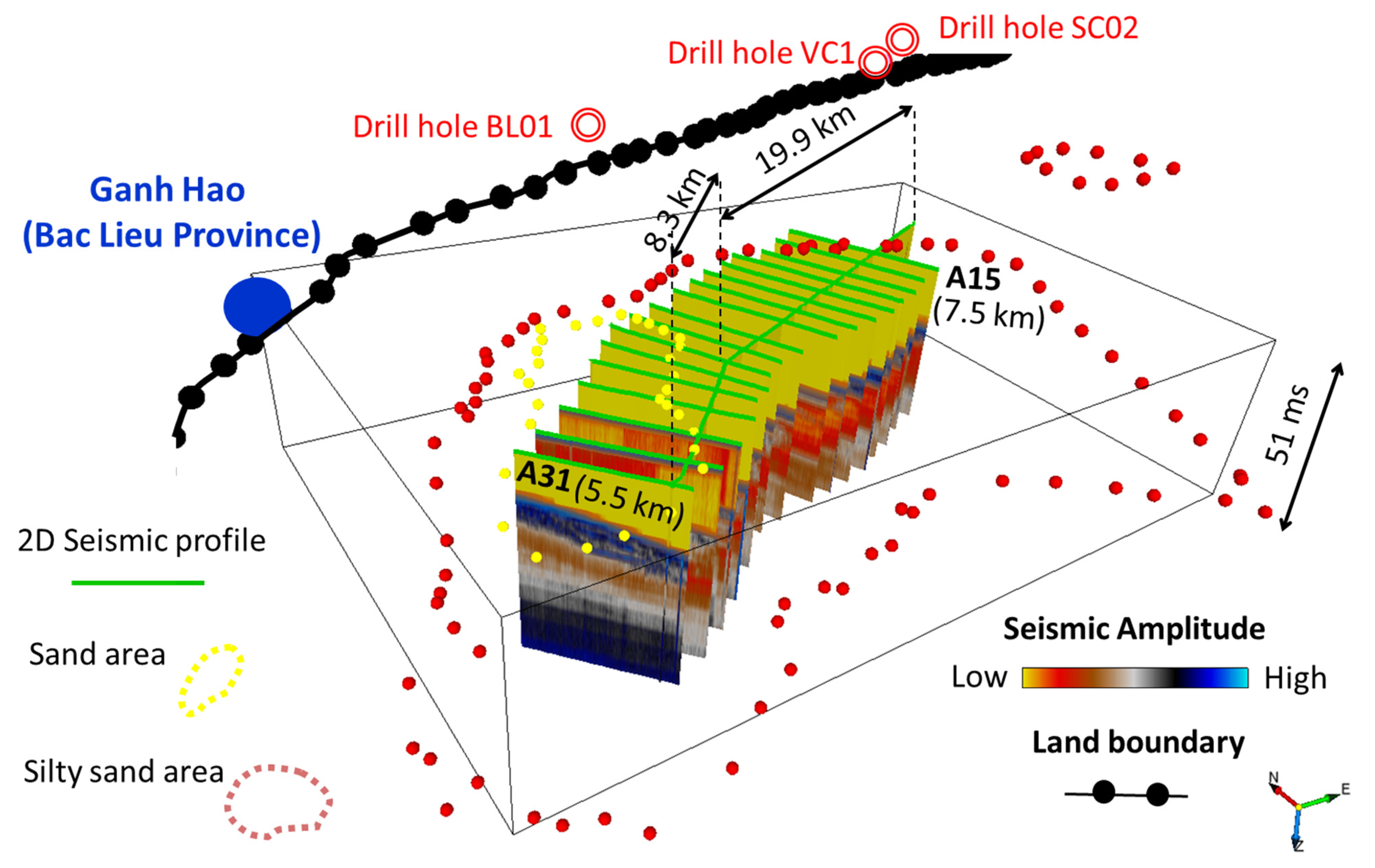
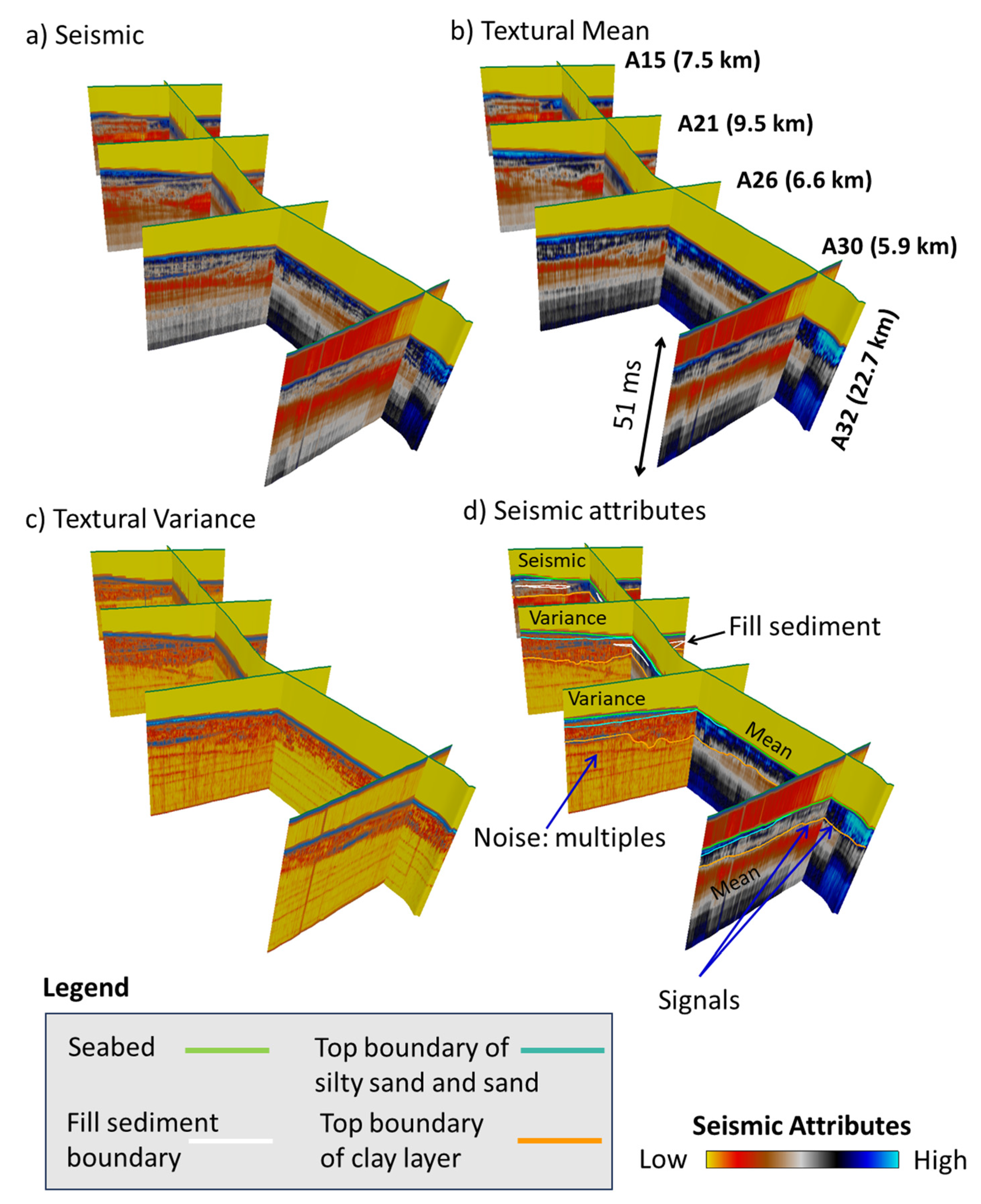
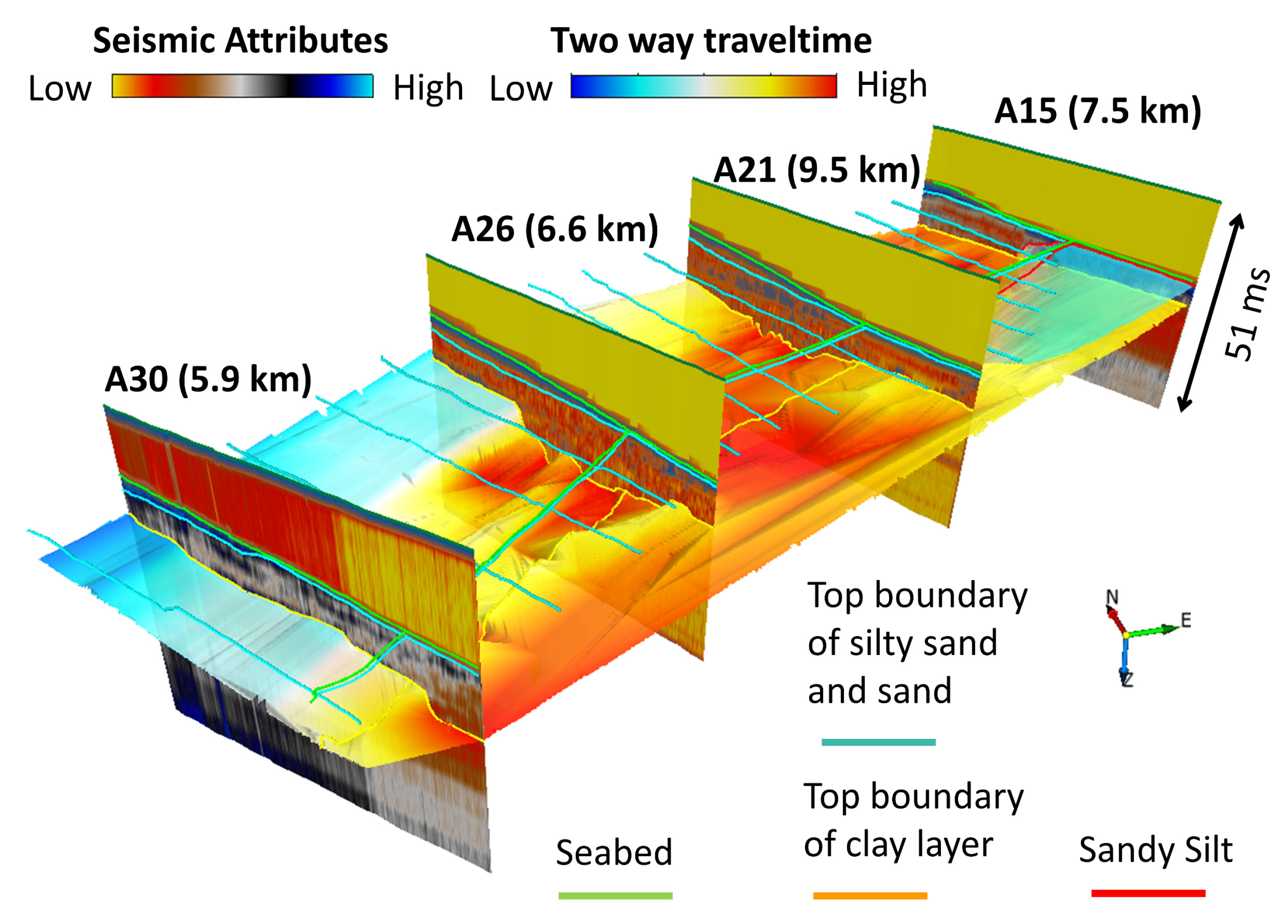
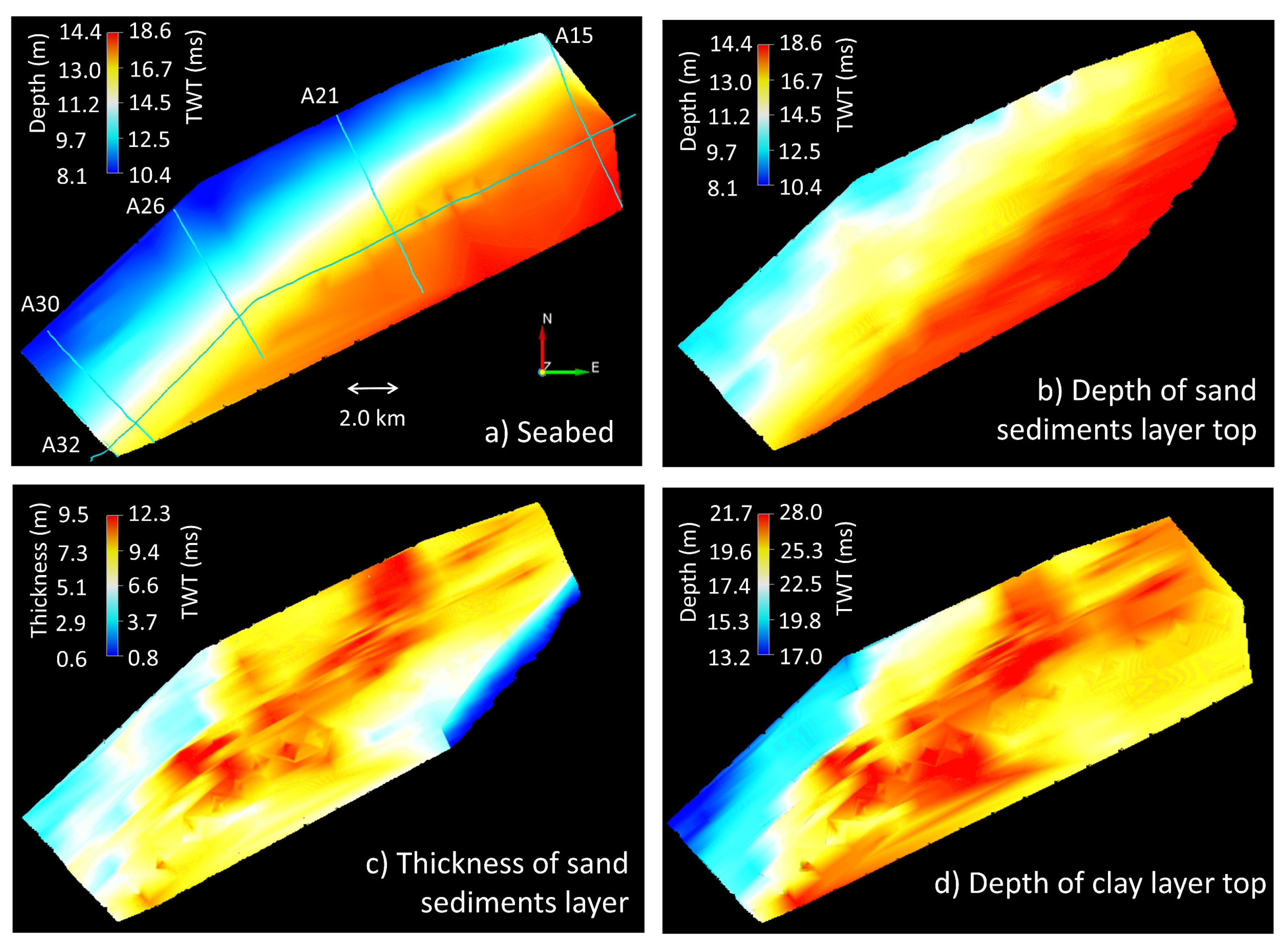
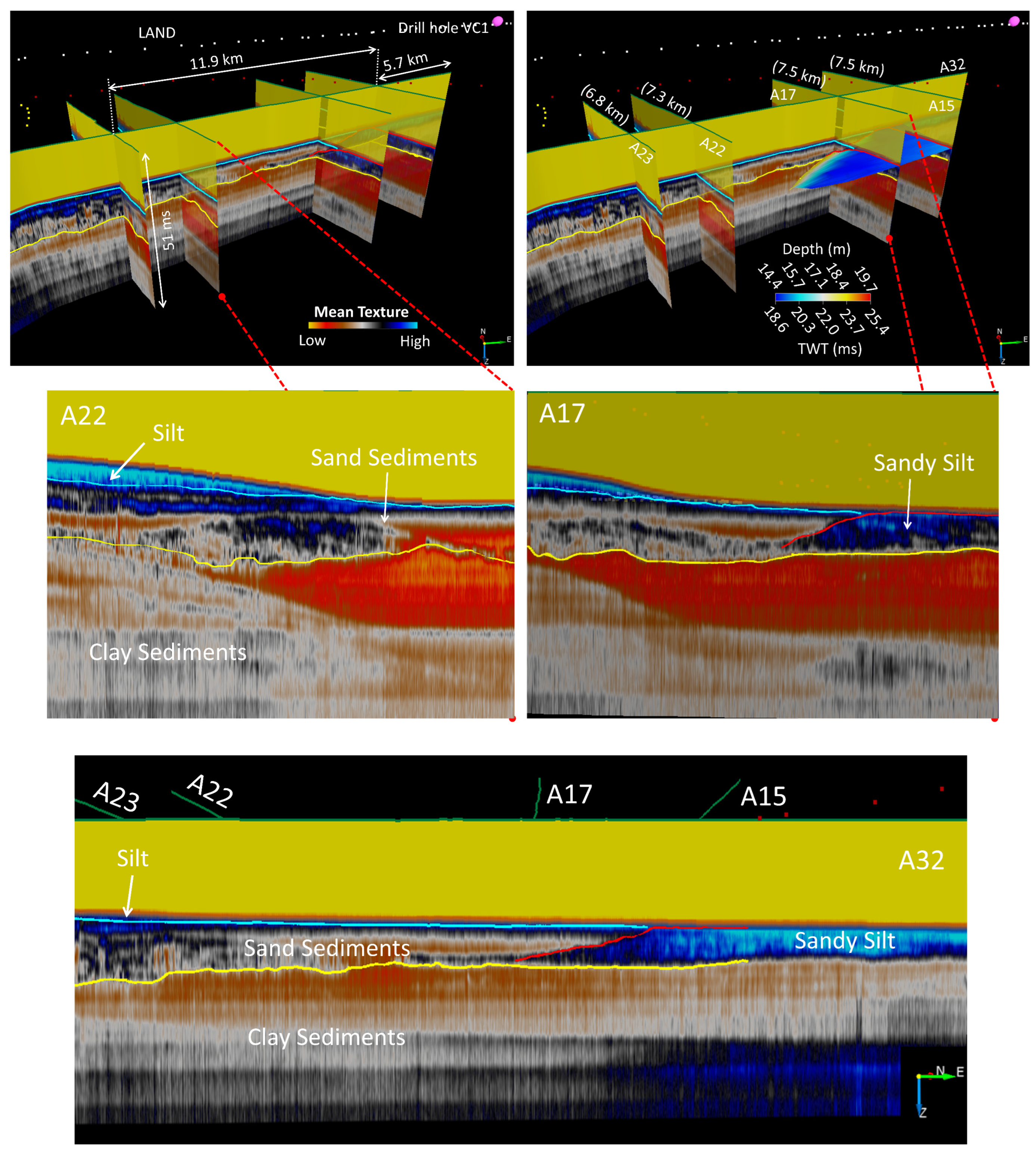
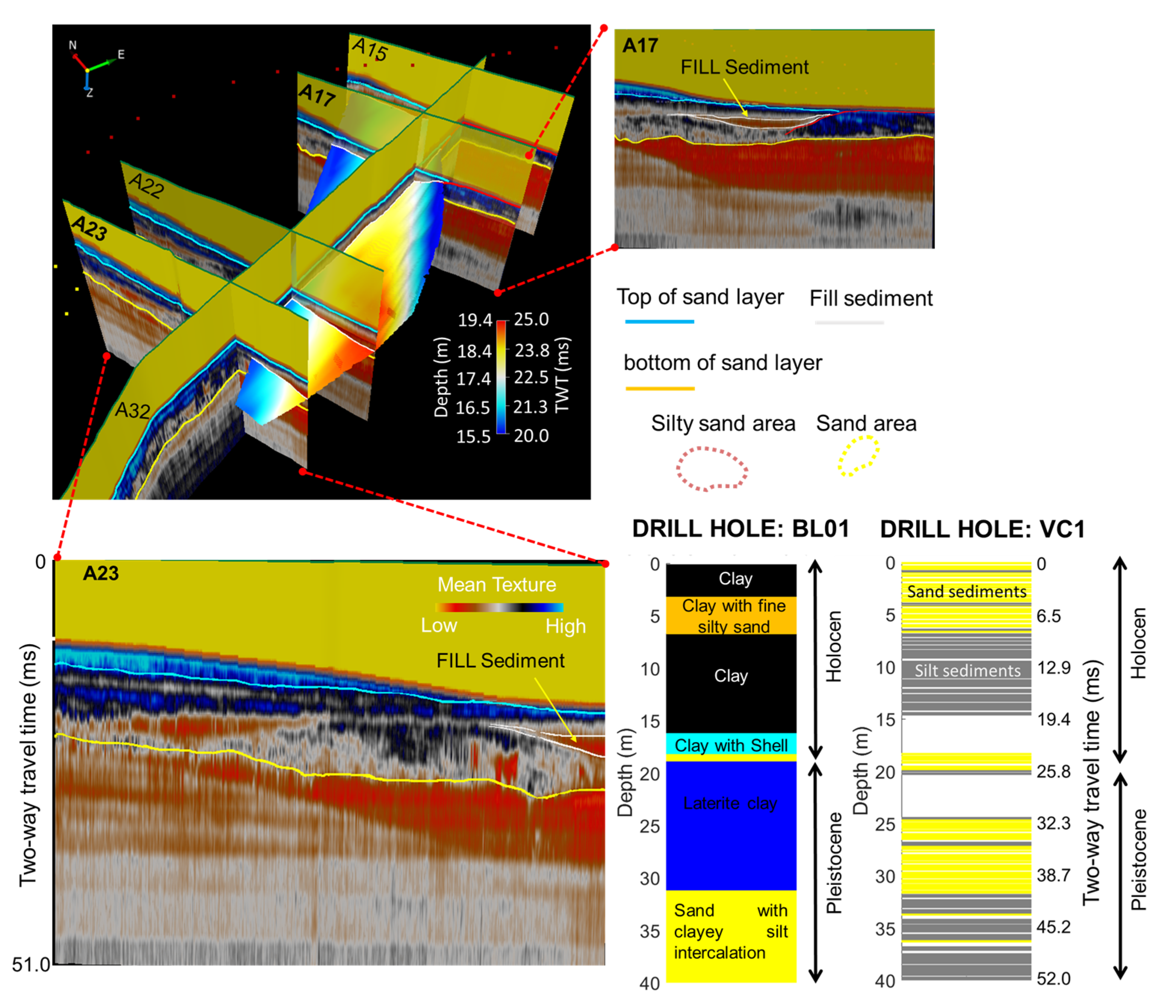
Disclaimer/Publisher’s Note: The statements, opinions and data contained in all publications are solely those of the individual author(s) and contributor(s) and not of MDPI and/or the editor(s). MDPI and/or the editor(s) disclaim responsibility for any injury to people or property resulting from any ideas, methods, instructions or products referred to in the content. |
© 2025 by the authors. Licensee MDPI, Basel, Switzerland. This article is an open access article distributed under the terms and conditions of the Creative Commons Attribution (CC BY) license (https://creativecommons.org/licenses/by/4.0/).
Share and Cite
Nguyen, D.Q.; Le, C.V.A.; Nguyen, T.V.; Huynh, T.V. Researching Holocene Sediments at Bac Lieu Offshore, Vietnam with Insights from Near-Surface 2D Reflection Seismic Data. Geosciences 2025, 15, 107. https://doi.org/10.3390/geosciences15030107
Nguyen DQ, Le CVA, Nguyen TV, Huynh TV. Researching Holocene Sediments at Bac Lieu Offshore, Vietnam with Insights from Near-Surface 2D Reflection Seismic Data. Geosciences. 2025; 15(3):107. https://doi.org/10.3390/geosciences15030107
Chicago/Turabian StyleNguyen, Dung Quang, Cuong Van Anh Le, Thuan Van Nguyen, and Tuan Van Huynh. 2025. "Researching Holocene Sediments at Bac Lieu Offshore, Vietnam with Insights from Near-Surface 2D Reflection Seismic Data" Geosciences 15, no. 3: 107. https://doi.org/10.3390/geosciences15030107
APA StyleNguyen, D. Q., Le, C. V. A., Nguyen, T. V., & Huynh, T. V. (2025). Researching Holocene Sediments at Bac Lieu Offshore, Vietnam with Insights from Near-Surface 2D Reflection Seismic Data. Geosciences, 15(3), 107. https://doi.org/10.3390/geosciences15030107




